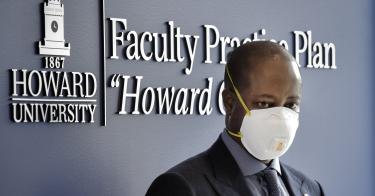Will Historically Black Colleges and Universities (HBCUs) survive the COVID-19 pandemic? Unfortunately, it’s a legitimate topic of debate.
As an HBCU graduate, I desperately want to believe that these invaluable institutions will survive. And for the sake of our country, I hope they do survive—for the ultimate measure of our nation’s vitality and strength is the ability of its people and its institutions to prevail in times of challenge and controversy.
Under extreme financial pressure arising from the COVID shutdown, colleges and universities across the nation are reassessing their business models and mapping out new strategies to assure they can carry on. This is nothing new for even the most venerable of these institutions.
Harvard University has adapted and innovated its education model through times of crisis for 384 years. I have every confidence that, like Harvard, flagship HBCUs such as Hampton and Howard Universities will adapt and continue to provide excellence in education and opportunities for the next generation to learn and develop the skills needed to compete in the domestic and global economy.
Make no mistake, HBCUs’ contributions to the black community and to all of America are invaluable. According to the United Negro College Fund, they serve more than 300,000 students each year. Their graduates hold fully a quarter of all African-American science, technology, engineering, and mathematics degrees earned by African-Americans. Moreover, 12.5 percent of all Black CEOs and half of all the nation’s black lawyers are HBCU grads.
Like other institutions of higher learning, HCBUs will work to weather the pandemic-blown storm by forging new partnerships with both the public and private sectors. Washington has already demonstrated the desire to help by creating the Higher Education Emergency Relief Fund as part of the Coronavirus Aid, Relief, and Economic Security (CARES) Act. The fund provided more than $1 billion in grants for HBCUs and other minority-serving institutions suffering hardship due to COVID-19.
Even before the pandemic hit, President Trump signed into law the Fostering Undergraduate Talent by Unlocking Resources for Education Act (FUTURE Act), making permanent $255 million in mandatory funding for HBCUs and other minority-serving institutions.
With just those two programs, you’re talking about some very serious money.
The National Center for Education Statistics notes that total revenue for HBCUs in the 2017–18 school year was $8.7 billion, with $1.9 billion coming from student tuition and fees. Compared to the Harvards of the world, the HBCU revenue model relies heavily on tuition and financial aid. Very few have cultivated large endowments. This has led some to be skeptical about HBCUs’ ability to withstand revenue losses occasioned by COVID-19.
But the Department of Education’s Capital Financing Program can provide more than $500 million in loans to HBCUs as a temporary “bridging” solution, buying the schools much-needed time to start diversifying their revenue streams, expanding private sector partnerships, and realigning their program offerings to more closely mirror the nation’s projected needs in technology, innovation, and military preparedness.
History tells us that the best way forward is to limit government’s reach and broaden free market opportunities. And that’s just what this stop-gap solution allows to happen.
Before the Civil War, public policy and statutory provisions gravely restricted opportunities for black students to pursue higher education and the training needed to compete at the highest levels of our nation’s economy. But there were a few bright lights.
One of them was Richard Humphreys, a Quaker philanthropist who was deeply concerned about the harmful impact of discrimination and the lack of opportunity for African Americans to compete for employment. A quintessential trailblazer, Humphreys sought solutions within his immediate control. He voluntarily donated one-tenth of his estate to establish the Institute for Colored Youth, which opened in 1837. It continues today as Cheyney University, the first and oldest Historically Black College in America.
Humphreys’ pioneering initiative would become a new norm in higher education. After all, solutions are contagious. Lincoln University in Pennsylvania opened its doors to black students in 1854. Then known as the Ashmun Institute, it was the first state-chartered, degree-granting HCBU. Two years later, the nation had its third HBCU: Wilberforce University of Ohio.
Today America has 101 HBCUs located in 19 states, the District of Columbia, and the U.S. Virgin Islands. These institutions had to overcome tremendous obstacles just to come into existence. They are adversity-hardened and time-tested. Working together, and working with willing partners in both public and private sectors, these institutions are destined to prevail over the challenges presented by the coronavirus. I am confident they will innovate new and better norms in higher education that will serve today’s students—and future generations of students—quite well.
This piece originally appeared in the Seattle Medium



